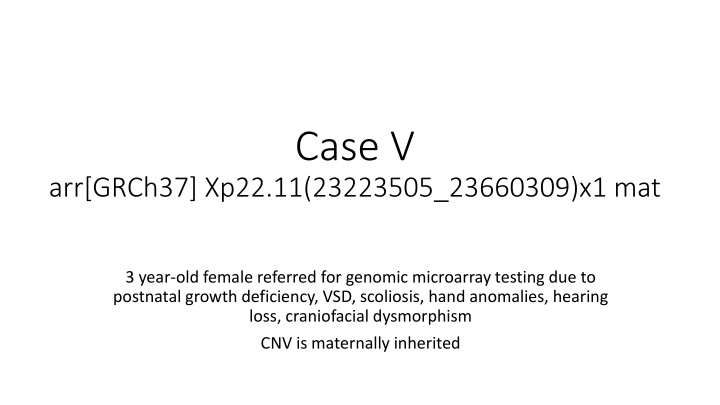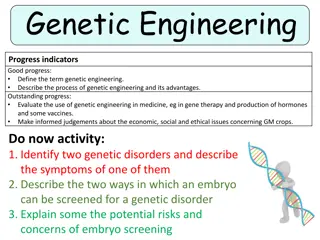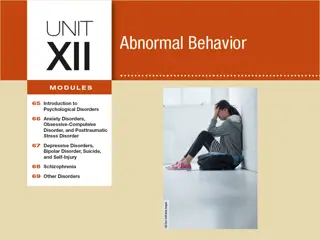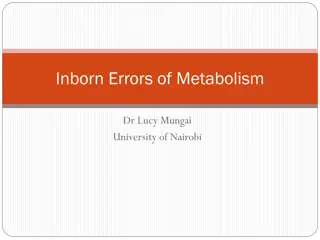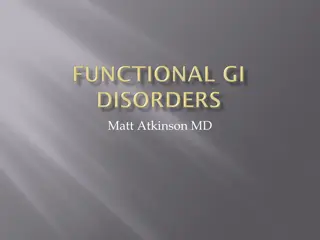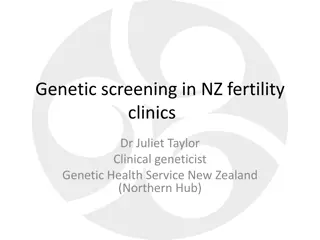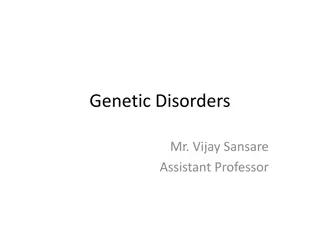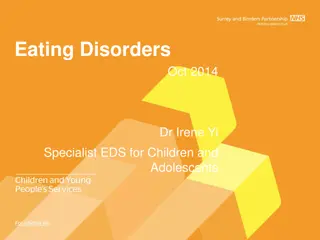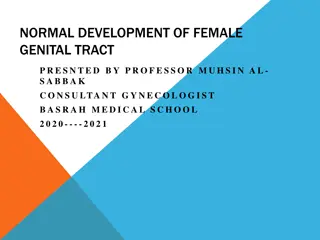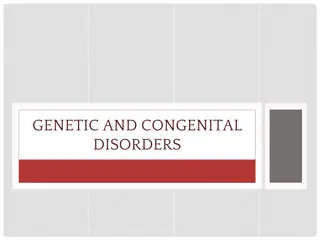Genetic Findings in a Female Patient with Developmental Disorders
A 3-year-old female patient (Case V) with postnatal growth deficiency, VSD, scoliosis, hand anomalies, hearing loss, and craniofacial dysmorphism was referred for genomic microarray testing. Maternal inheritance of a CNV was identified. Research on PTCHD1 disruptions in males and carrier females highlighted associations with neurodevelopmental disorders. Further studies are needed to understand the impact of X-linked recessive gene losses in females. The study found a history of speech delay and high-functioning ASD in a carrier female and her daughter, emphasizing the need for more in-depth investigations.
Download Presentation

Please find below an Image/Link to download the presentation.
The content on the website is provided AS IS for your information and personal use only. It may not be sold, licensed, or shared on other websites without obtaining consent from the author.If you encounter any issues during the download, it is possible that the publisher has removed the file from their server.
You are allowed to download the files provided on this website for personal or commercial use, subject to the condition that they are used lawfully. All files are the property of their respective owners.
The content on the website is provided AS IS for your information and personal use only. It may not be sold, licensed, or shared on other websites without obtaining consent from the author.
E N D
Presentation Transcript
Case V arr[GRCh37] Xp22.11(23223505_23660309)x1 mat 3 year-old female referred for genomic microarray testing due to postnatal growth deficiency, VSD, scoliosis, hand anomalies, hearing loss, craniofacial dysmorphism CNV is maternally inherited
Our Patient (Case V) ? 3 year-old ? Female X Postnatal growth deficiency X VSD X Scoliosis X Hand anomalies X Hearing loss ? Craniofacial dysmorphism
23 individuals (16 families) with a truncating mutation or deletion PTCHD1 disruptions in males are associated with neurodevelopmental disorders of varying severity, with a prominence of ASD and other behavioral characteristics We did not have detailed information on female carriers (mothers, sisters and grandmothers of the probands) but they were reported to have no major problems with intellect and daily functioning. More studies are needed in females to clarify whether carrier status and X-inactivation pattern may have subtle effects on phenotype Case V deletion
The single female subject in our study (K1) has a history of speech delay and a subsequent diagnosis of high-functioning ASD; her unaffected mother also carried the PTCHD1 deletion. X-inactivation studies in mother and daughter were uninformative. Thus we cannot rule out subtle neurodevelopmental phenotype in carrier females, and more in-depth studies are needed.
Classification: Pathogenic Classification of losses involving X-linked recessive genes in females should be based on the predicted impact in a male Evidence Score Notes 1A Protein-coding gene? Complete overlap with established HI gene? Gene count: 0-24 genes Individual case evidence: de novo inheritance**, phenotype non-specific HI predictors (%HI AND pLI) 4L-O Case-control, population evidence Maternal inheritance (unaffected), proband with specific phenotype Total points 0 Yes 2A 1 Yes, an XLR gene (can stop here) OR 3A 1 protein-coding gene >10 cases (0.1 points for each, 0.90 points max) 0.1**PTCHD1 (X-linked gene) Limited data available (X CNV) 0 4C 0.9 2H 5B 0 XLR, inheritance not informative 1 **Modified for X-linked gene (more guidance coming from the ClinGen DSC)
Clinical Significance? Given the significant reproductive risk to female carriers of X-linked conditions, we recommend reporting these variants because it provides the opportunity for the patient and relevant family members to pursue additional testing/counseling as needed. Additionally, females may manifest symptoms in many X-linked disorders; these variants may ultimately have an impact on their medical management.
Example Report 6: X-linked finding in a female Patient Name: Jane Doe DOB: 01/01/2010 Laboratory ID: 1234567 Test ordered: Chromosomal Microarray Include any other important header information, such as: relevant dates, additional patient demographics, ordering provider information, sample information, etc. Reason For Referral (RFR): Jane Doe is 9 year old female referred for hearing loss. Report Summary: This test did not identify any variants that can explain the patient s reported clinical features at this time. However, a maternally inherited, PATHOGENIC 124 kb deletion of Xq21.1 (involving the ATP7A gene) was identified. Hemizygous loss of function variants in this gene have been associated with Menkes disease in MALES; as Jane Doe is a FEMALE, this finding likely represents CARRIER STATUS for Menkes disease. Female carriers of pathogenic ATP7A variants are typically asymptomatic, though unfavorably skewed X-inactivation could result in clinical findings related to this disorder. Genetic counseling and clinical correlation are recommended to discuss the potential reproductive implications of this finding and to determine if additional testing is warranted to identify a genetic etiology for Jane Doe s hearing loss. Don t stop here Copy Number Variant (CNV): 124 kb Xq21.1 Deletion ISCN Type Size Inheritance Zygosity Classification arr [GRCh37] Xq21.1 (77226076-77350000) x 1 Deletion 124 kb Maternal Heterozygous Pathogenic Relevant Genomic Content: This deletion includes a single gene relevant to this report: Gene Disease Mode of Inheritance Relevance Category Notes ATP7A Menkes disease X-linked Carrier Status Female heterozygous carriers of pathogenic variants in ATP7A TYPICALLY DO NOT display overt clinical features of Menkes syndrome, an X-linked condition affecting predominantly males. This finding DOES NOT explain the patient s reported clinical features. Clinical correlation is recommended to determine if additional testing is warranted. ATP7A Include a more detailed description of ATP7A, Menkes disease, and the evidence supporting this classification, including any appropriate references. Include any other relevant report information, such as methods, quality metrics, disclaimers, resources, etc. Supp Material 4, Example Report 6
